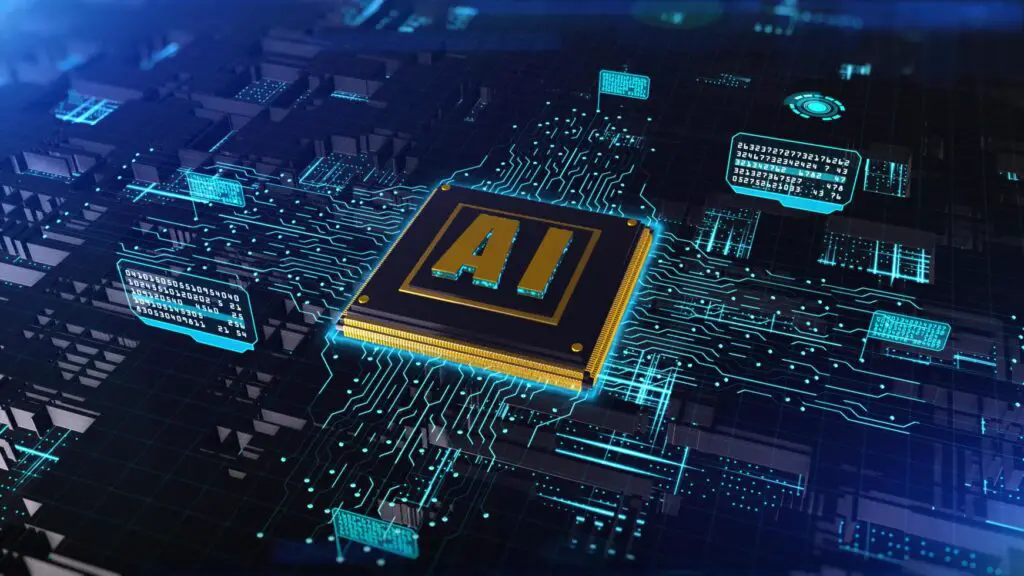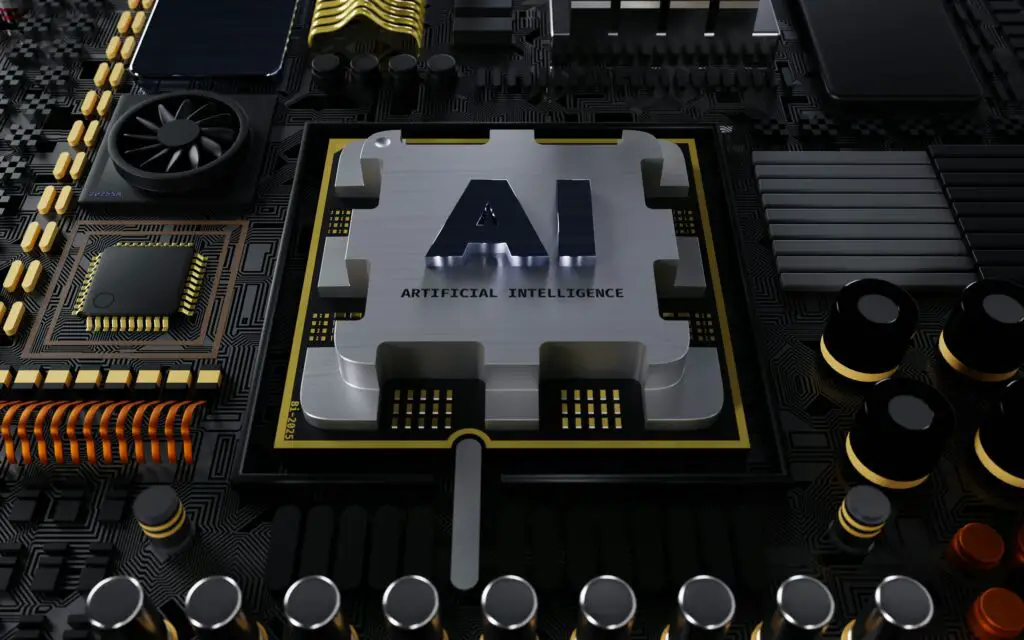Artificial Intelligence (AI) is transforming the way we work, play, and interact with technology, and at the heart of this revolution are AI-optimized chips. These specialized processors, designed to handle complex AI workloads, are powering smarter smartphones, laptops, gaming consoles, and more. In 2025, the AI chip market is projected to reach $91.96 billion, growing at a 29% CAGR, driven by demand for generative AI, edge computing, and high-performance applications. From Qualcomm’s Snapdragon 8 Elite to NVIDIA’s Blackwell GPUs, these chips deliver unprecedented speed, efficiency, and intelligence. This article explores how AI-optimized chips enhance performance for work and play, highlights top models, and examines their impact on consumers in 2025.
The AI Chip Revolution: Why 2025 Is a Game-Changer
AI-optimized chips, including GPUs, NPUs (Neural Processing Units), and ASICs (Application-Specific Integrated Circuits), are designed to accelerate AI tasks like machine learning, neural networks, and generative AI. Unlike general-purpose CPUs, these chips excel at parallel processing, low-precision arithmetic, and energy-efficient computation, making them ideal for everything from real-time video editing to immersive gaming. In 2025, advancements in 3nm and 2nm manufacturing, high-bandwidth memory (HBM3), and mixture-of-experts (MoE) architectures are pushing performance boundaries. Posts on X, like @Ava_AITECH’s, praise NVIDIA’s Blackwell Ultra for its 2x attention-layer acceleration, while @TheGalox_ highlights Snapdragon’s 45 TOPS NPU for on-device AI. For GadgetShaker readers, these chips mean devices that work smarter and play harder, enhancing productivity and entertainment.
How AI Chips Enhance Work and Play
AI-optimized chips are reshaping consumer experiences by powering devices that are faster, more intuitive, and energy-efficient. Here’s how they impact work and play:
For Work: Productivity and Creativity
- Smarter Workflows: NPUs in chips like Intel’s Core Ultra 7 268V enable AI tasks like automated note-taking, real-time transcription, and video call enhancements (e.g., background blur, noise reduction). For example, Microsoft’s Copilot+ PCs, powered by Snapdragon X Elite, integrate AI into Word and Excel for drafting emails or analyzing data, per Lowyat.NET.
- Content Creation: AI chips accelerate photo and video editing. The Apple A18 Pro’s 35 TOPS NPU powers Audio Magic Eraser on the iPhone 17, removing background noise in videos instantly, per Mirror Review.
- Data Analysis: Chips like AMD’s Ryzen AI 300 series, with 50 TOPS, handle complex datasets for professionals, enabling real-time insights in finance or research, per MarketsandMarkets.
- Battery Efficiency: NPUs offload AI tasks from CPUs/GPUs, extending battery life. The HP EliteBook X with Intel Core Ultra 7 achieves 2x longer battery life for Office tasks, per Intel.com.
For Play: Gaming and Entertainment
- Immersive Graphics: NVIDIA’s Blackwell RTX 50 Series GPUs, unveiled at CES 2025, use AI-driven DLSS 4 for 8x performance boosts in games like Starfield, per NVIDIA Blog.
- Real-Time Rendering: RTX Neural Shaders enhance textures and lighting in real-time, creating lifelike characters, per NVIDIA Blog.
- Personalized Gaming: AI chips adapt game difficulty and NPC behavior, as seen in titles like AI Limit, per our AI in gaming article.
- Streaming and VR: 5G-enabled chips like Snapdragon 8 Elite reduce latency for cloud gaming and VR, ensuring smooth experiences on devices like the Meta Quest 4, per our 5G article.
For consumers, these chips mean laptops that streamline work, smartphones that enhance creativity, and consoles that deliver cinematic gaming, all while sipping power.
Top AI-Optimized Chips for 2025
Here are the standout AI-optimized chips of 2025, selected for their performance, efficiency, and consumer impact, based on recent industry updates.
1. Qualcomm Snapdragon 8 Elite (Gen 4)
- Specs: 3nm TSMC process, 8-core Oryon CPU (up to 4.32GHz), Adreno 830 GPU, 45 TOPS Hexagon NPU, Snapdragon X80 modem (5G, Wi-Fi 7)
- Devices: Samsung Galaxy S25, Xiaomi 15, OnePlus 13
- Why It’s Exciting: This chip offers 40% faster CPU performance and a 45 TOPS NPU for on-device AI tasks like real-time translation and photo editing, per Mirror Review. Its Adreno GPU supports ray tracing for console-quality gaming on phones. @TheGalox_ on X ranks it among the best for Android flagships.
- Consumer Benefit: Run AI apps, stream 4K content, and play Genshin Impact smoothly on your smartphone with 2-day battery life.
2. Apple A18 Pro
- Specs: 3nm TSMC N3E process, 6-core CPU, 6-core GPU, 16-core Neural Engine (35 TOPS)
- Devices: iPhone 17 series, iPad Pro
- Why It’s Exciting: The A18 Pro delivers 15% faster CPU and 20% GPU performance over the A17 Pro, with a 35 TOPS NPU for tasks like video sound editing, per Mirror Review. Its efficiency ensures 18-hour battery life on the MacBook Air M4, per our ultra-thin laptops article.
- Consumer Benefit: Ideal for iOS users needing seamless video editing, gaming, or productivity on iPhones or iPads.
3. Intel Core Ultra 200U/H/HX (Series 2)
- Specs: Up to 24 cores (8 P-cores, 16 E-cores for HX), Intel Arc graphics, 11–48 TOPS NPU, Wi-Fi 7, Thunderbolt 5
- Devices: HP OmniBook Ultra, Lenovo ThinkPad X1 Carbon Gen 13
- Why It’s Exciting: Unveiled at CES 2025, these chips offer 2.2x faster processing and 3.3x AI model performance (e.g., Llama 3) over predecessors, per TechCrunch. The HX series powers gaming laptops, while the U series suits ultrabooks, per Intel.com. @CDWCorp on X notes its battery efficiency.
- Consumer Benefit: Perfect for creators editing 4K videos or gamers running Shadow of the Tomb Raider on laptops.
4. AMD Ryzen AI 300 Series
- Specs: Zen 5 architecture, up to 12 cores, RDNA 3.5 GPU, 50 TOPS NPU, LPDDR5X RAM
- Devices: Asus Zenbook 14 OLED, Acer Nitro laptops
- Why It’s Exciting: With 50 TOPS, these chips power Microsoft’s Copilot+ PCs, offering 1.4x faster graphics than Intel’s Lunar Lake, per PCMag. Their MI355X GPUs excel in data center AI, per AMD.com. @AMD on X highlights their gaming prowess.
- Consumer Benefit: Play AAA titles or handle AI workloads on laptops and handhelds with long battery life.
5. NVIDIA Blackwell RTX 50 Series
- Specs: 4nm TSMC process, up to 2x AI inference performance, FP4 support, DLSS 4, Reflex 2
- Devices: RTX AI PCs, gaming laptops
- Why It’s Exciting: Unveiled at CES 2025, these GPUs offer 8x performance boosts with Multi Frame Generation and RTX Neural Shaders for real-time rendering, per NVIDIA Blog. @Ava_AITECH praises their 2x attention-layer acceleration.
- Consumer Benefit: Enjoy cinematic gaming and AI-driven content creation on high-end PCs or consoles.
Key Trends in AI-Optimized Chips for 2025
1. Neural Processing Units (NPUs)
NPUs are now standard in mobile chips, handling AI tasks like speech recognition and image processing with minimal power. Intel’s Core Ultra delivers 25% faster mainstream apps compared to Snapdragon X Elite, per Intel.com.
2. 3nm and 2nm Processes
Smaller processes, like TSMC’s 3nm N3E and upcoming 2nm, reduce power consumption by 50% and boost performance by 30%, per Korea Herald. Samsung and Intel aim for 2nm mass production in 2025, per Korea Herald.
3. Mixture-of-Experts (MoE) Architectures
MoE models, like DeepSeek’s V3 with 256 experts, activate only a subset for tasks, reducing compute needs by 50%, per The Register. This enhances efficiency in devices like Copilot+ PCs.
4. Edge AI and Low-Power Computing
Edge AI chips, like Arm’s Cortex-M55 with Ethos-U55 NPU, offer up to 480x AI performance for wearables and IoT, per AIAcceleratorInstitute. This enables on-device AI without cloud reliance, per Embedded Computing Design.
5. High-Bandwidth Memory (HBM3)
HBM3, used in AMD’s MI355X and NVIDIA’s Blackwell, boosts data transfer speeds by 75%, per Korea Herald, ideal for AI-driven gaming and productivity.
Benefits for Consumers: Work and Play
AI-optimized chips deliver transformative benefits:
- Work Efficiency: NPUs streamline tasks like data analysis or video call enhancements, saving hours for professionals, as seen in Microsoft 365’s Copilot features, per Lowyat.NET.
- Creative Power: GPUs and NPUs accelerate editing in apps like Adobe Premiere, enabling 4K video rendering on laptops like the HP OmniBook Ultra, per ZDNET.
- Gaming Immersion: AI-driven graphics, like NVIDIA’s DLSS 4, enhance visuals in Call of Duty: Black Ops VI, reducing latency by 75% with Reflex 2, per NVIDIA Blog.
- Battery Life: Offloading AI tasks to NPUs extends battery life, with the Surface Laptop 7 lasting 20 hours, per Lowyat.NET.
- Affordability: Budget chips like Snapdragon X Plus power entry-level Copilot+ PCs, starting at $799, per Computerworld.
For you, this means a smartphone that edits videos instantly, a laptop that lasts all day, or a console that delivers lifelike gaming, all tailored to your lifestyle.

Challenges and Considerations
- Cost: Premium chips like NVIDIA’s Blackwell drive up device prices, with RTX AI PCs costing $1,500+, per NVIDIA Blog.
- Thermal Management: High-performance chips, like Intel’s HX series, generate heat in slim laptops, requiring robust cooling, per PCMag.
- Privacy: AI features collect data for personalization, so review settings, as noted in our GDPR Policy.
- Software Lag: Some apps, like Audacity, are only beginning to leverage NPUs, limiting immediate benefits, per Computerworld.
- Supply Constraints: Chip production faces delays, like Microsoft’s Braga chip (2026), due to design issues, per Reuters.
GadgetShaker recommends checking device specs for cooling and ensuring app compatibility with AI features.
The Future Beyond 2025
By 2030, AI-optimized chips will evolve:
- 2nm Processes: TSMC and Samsung’s 2nm chips will boost efficiency by 60%, per Korea Herald.
- Neuromorphic Computing: Intel’s Loihi 2, 10x more efficient than GPUs for specific tasks, will power edge devices, per @BaptisteVicini.
- Quantum-AI Hybrids: Google’s Willow chip and IBM’s quantum efforts will enhance AI optimization, per Medium.
- 6G Integration: Faster networks will support cloud-based AI, per our 5G article.
For consumers, expect smarter, more efficient devices that seamlessly blend work and play.
GadgetShaker’s Commitment
At GadgetShaker, we test AI-powered devices to deliver insights you can trust. Curious about the Snapdragon 8 Elite or Blackwell GPUs? Share your thoughts on our Contact Us page or comment below! Stay tuned for articles like “Best AI-Optimized Laptops for 2025” or “How to Leverage AI Chips for Gaming.”

